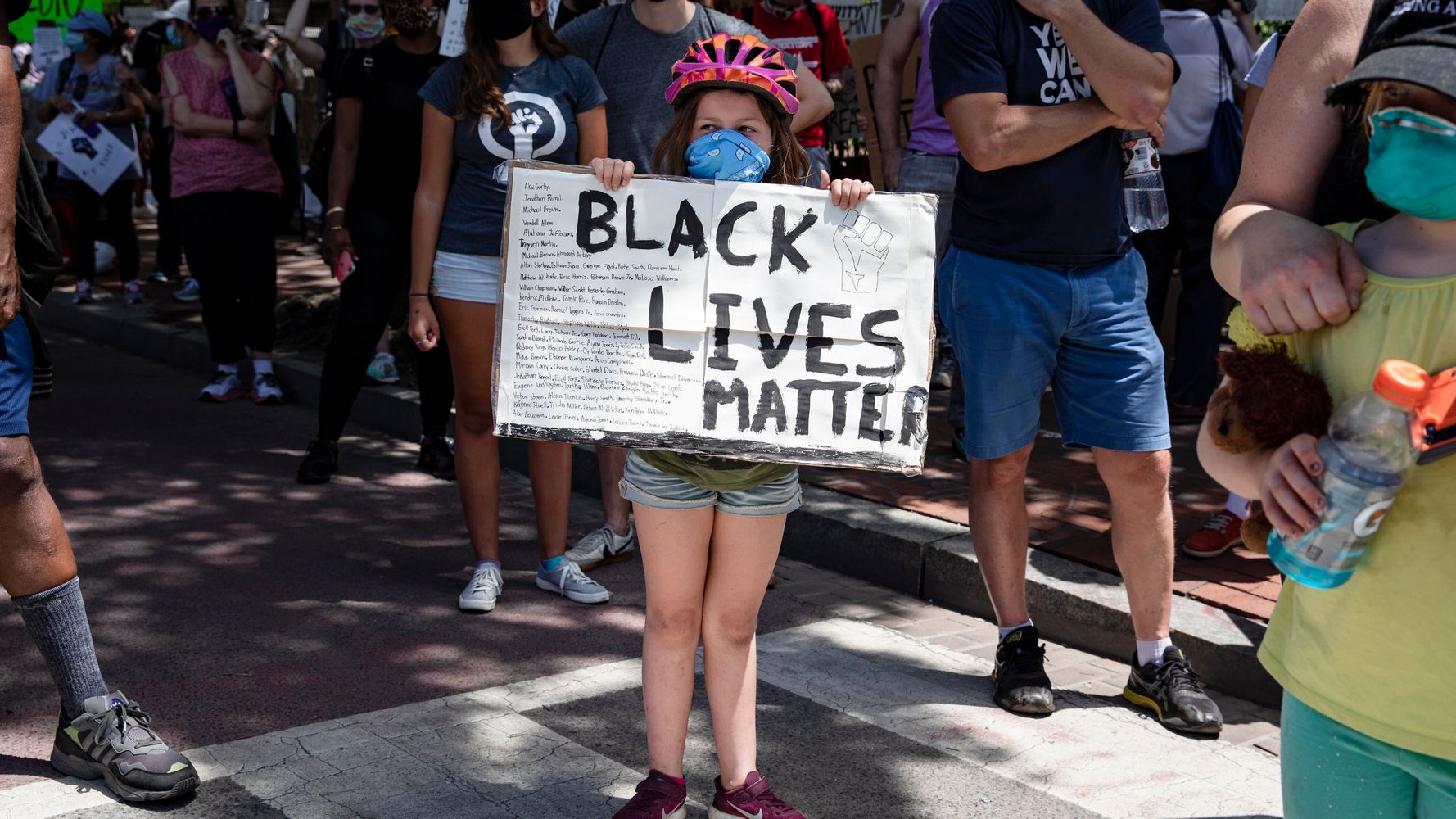[ad_1]

As the George Floyd protests continue across the United States and around the world, there’s been a flurry of articles — including plenty here on HuffPost Parents — about how parents can talk to their kids about racism, racial justice and police brutality. (A few basics: Do it early, do it often, have a plan — and don’t feel like you have to have all the answers.)
And experts whose work centers around studying and combatting racial bias commend parents for having those conversations. But they’re not enough.
“Words and action are really related,” said Sachi Feris, a blogger who writes at Raising Race Conscious Children. “The two really go hand in hand.”
With that in mind, here are six important questions for white parents to consider about the ways they might be unintentionally shaping their kids’ understanding of race and racism.
1. What emotions am I showing when my kid asks me questions?
From “why is the sky blue?” to “what happens when we die?” kids have a wonderful ability to spring tough questions on their parents at unexpected moments. And that’s certainly true of questions around race and racism.
As much as possible, it’s important for parents to really tune into what they’re unintentionally broadcasting in those moments when your kid inevitably hits you with a question you weren’t ready for.
“They’re listening to you, but they’re also watching how you say it,” said Howard Stevenson, a professor of urban education at the University of Pennsylvania’s Graduate School of Education. If you change the subject, if you answer in a nervous way, if you’re excited — all of that communicates something to your child, he said.
That doesn’t mean, of course, that you should expect to be some kind of robot who displays no emotions when your kid talks to you about what can be really hard, thorny stuff. But it’s important that as a parent you A) tune into what you’re feeling and B) feel free to be open with your kid about your emotions in the moment, so they’re not interpreting what they think they see in a negative way.
Stevenson gave the example of when his own 8-year-old son asked him about why Trayvon Martin’s parents were crying on TV, which was a conversation he wasn’t prepared to have in the moment. He said it’s OK for parents to “communicate the truth about what you’re feeling in the moment — even if it’s fear.” You’re trying to explain the nonverbal messaging they’re picking up on (and being aware of it yourself), which can go a long way in providing context for your child, and making sure they feel comfortable continuing to ask hard questions.
2. Am I acknowledging whiteness?
“When we’re talking about race, we’re not just talking about people of color. We’re talking about whiteness and exposing that whiteness still dominates and tells a story — that is not true — about whiteness being better [and] about whiteness being normal,” said Feris. Ignoring whiteness feeds into the “colorblind” ideology, which can fuel racial bias.
This can play out in subtle ways, like how and when you use certain labels.
“If you only say ‘my Black co-worker said blah blah blah,’ but you never say, ‘my white co-worker said blah blah blah,’ that’s this indirect way that you’re indicating that race only matters for the person who is Black, but not the white person,” said Gabriela Levas Stein, an associate professor of psychology at UNC Greensboro and one of the founders of CAMINOS Lab.
If you’re going to use identity labels, be mindful that you’re not inadvertently signaling that whiteness is somehow normal and everything else is somehow other.
3. Do I have any diversity in my own network?
This is a really complex question. White parents certainly shouldn’t go out and try to cultivate relationships with parents and families of color simply for the sake of exposing their own children to greater diversity.
“You don’t want to have this, ‘I have to do this because it’s good for my kid’s mentality,’” said Stein. But if there are organic ways to broaden the diversity of your own network — and of your kiddo’s — you should!
“There’s no place that’s 100% white, so in your school, how are families included in different events? Whether or not you’re then going to befriend people, you’re at least showing your kid that you’re actively trying to think about being inclusive and thinking about equity,” Stein said.
Also, talk about it. Ignoring the fact that you might not have a lot of diversity around you, or among your friends and colleagues, doesn’t mean your kids won’t notice. So spend some time really thinking about why you live where you live, Stevenson urged — and be prepared to talk to your kids about the choices you’ve made, even if it requires some pretty uncomfortable soul-searching on your part. It’s not an easy task, but it is an important one.
4. What are we reading? Watching?
“We have to make a conscious effort to be aware of what media we’re consuming,” said Feris. “We can make an effort to diversify what we’re listening to and what we’re reading.” And the shows and movies you watch, the art hanging on your walls, the magazines you might read and the images they contain, the toys your kids play with … and on and on.
The experts say you can’t just rely on a kind of osmosis. It’s not enough to just read books that center Black characters, for example, and then kind of hope your child suddenly understands why representation matters and how culture can fuel racial bias.
“The follow-up — and the conversations — are really important,” said Stein.
5. Are we standing up for what we say we believe in?
Parents may be reluctant to take their children to protests right now for any number of reasons, not least of which is the COVID-19 pandemic. But there are plenty of actions you can take with your children, to go along with conversations you’re having with them about what is happening in the world.
“It’s the idea of planting seeds,” said Feris. “I’m not bringing my children to a protest right now for various reasons … but there are other ways we can participate from home.”
Can you make a sign to hang from your front window or in your yard, and talk about what you’re doing while you do it together? Can you join a virtual protest? Also, are you standing up to racism when you hear a comment from a friend or relative — or are you letting it slide in front of your kids? Those moments send a clear message.
6. Am I talking about racism often enough?
To combat racial bias, it’s important to have proactive conversations — and those conversations should happen much more frequently than white parents often have them, Feris said. Like, daily. That doesn’t necessarily mean a lecture. It could mean simply hitting pause to call out a stereotype in your son or daughter’s favorite movie. In that way, the daily (or at least frequent) conversation becomes a kind of action, Feris said.
While the country is in turmoil right now, experts who work in this area are hopeful that children will learn from those conversations and confront racial bias head-on.
“Children are remarkable,” said Stevenson. “Once they get a hold of strategies that allow them to have a voice that allows them to speak and not feel shame about what is going on, they are empowered to make change.”
[ad_2]
Source link

